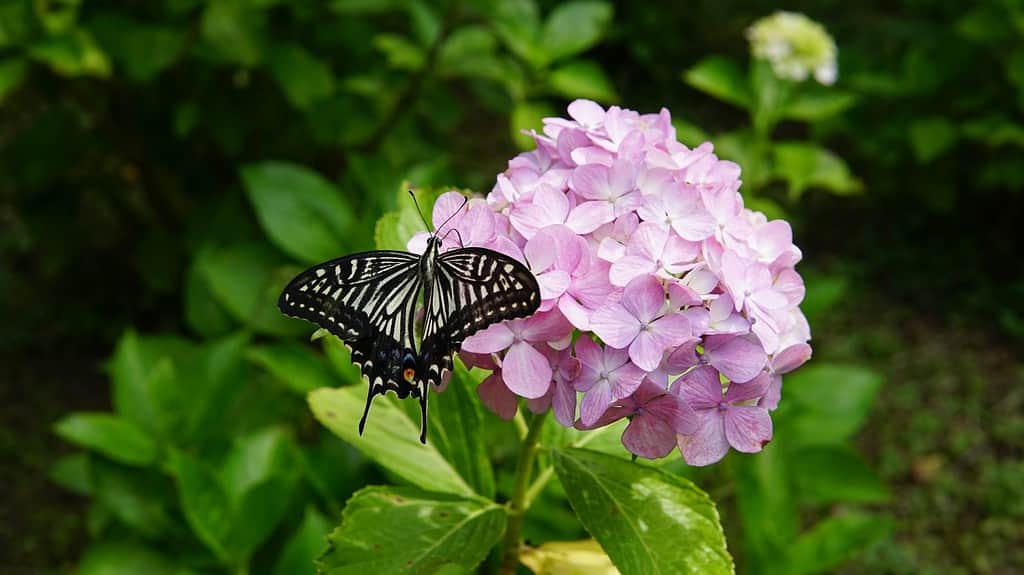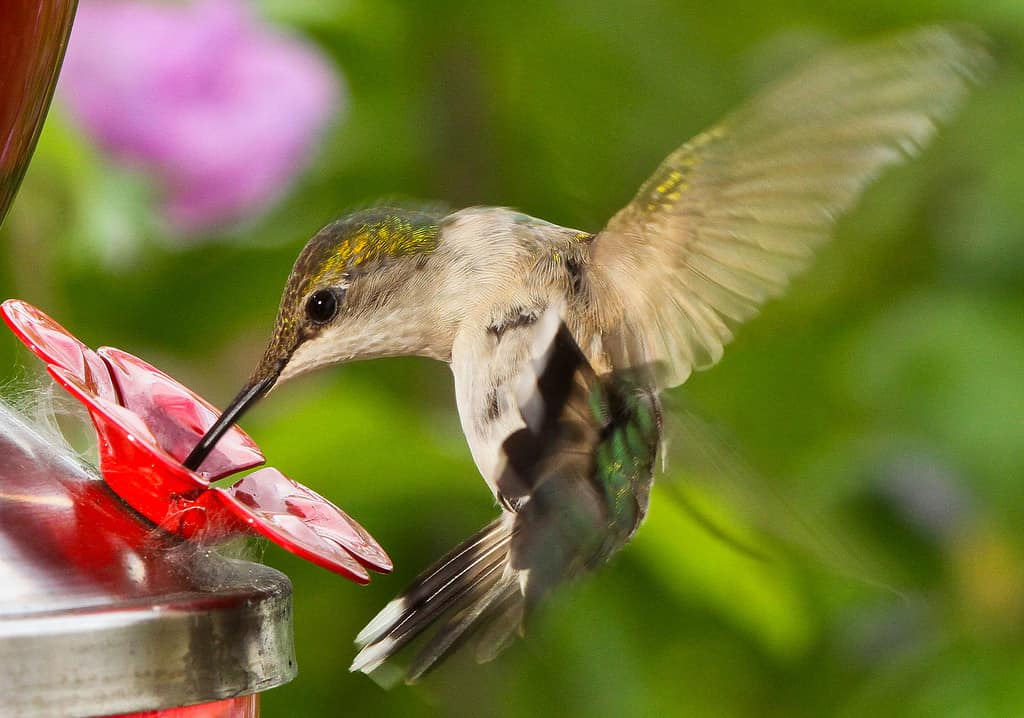
The post Fun Pollinator Facts to Share This National Pollinator Week appeared first on A-Z Animals.
Pollinator Week is coming up, a whole week to celebrate the pollinators of the world. Pollinators such as bees, butterflies, bats, moths, and birds are all essential in protecting the environment. Pollinators carry the heavy burden of helping plants reproduce, maintaining biodiversity, aiding food production, and so many other responsibilities. Pollinator Week was initiated by Pollinator Partnership to protect and support pollinators throughout the world. The week-long celebration is recognized by the U.S. Department of Agriculture to boost awareness and support for the initiative. Read below to learn some fun facts about the pollinators supporting our world!

©HWall/Shutterstock.com
1. Bees Can Sense Electricity
Bees are probably the most famous pollinators and for good reason. These tiny insects are capable of so much, helping to pollinate plants all across the world. Did you know that they’ve evolved to sense the electric fields of flowers? How bees do this is largely unknown, but it is thought that the small hairs on their bodies can detect electricity. This allows bees to know which flowers are best for pollinating and to determine which ones they’ve already visited. This comes in handy when searching for pollen, as it helps bees support flowers that have not yet been visited by a pollinator.
2. Hummingbirds Are Trapliners
Trapliners are pollinators that follow a specific path of flowers to pollinate. Hummingbirds are a part of this category as they follow the same routes for pollinating, almost like a mailperson. This systematic approach allows the birds to follow a predictable route that provides the most nectar at optimal times. This helps to keep the ecosystem in balance and helps plants reproduce.
3. Some Butterflies Have Flower-Specific Memory
Butterflies, such as Heliconius butterflies, have good memories that help them remember specific flowers. Just like how hummingbirds have specific routes they follow, butterflies do the same. Butterflies have long migration patterns, like the monarch butterfly that travels all the way from Canada to Mexico. Having a good memory is helpful during migration, as it allows them to remember where the best flowers for pollen are located.

©GlimpseDays/Shutterstock.com
4. Orchid Bees Make Their Own Perfume
Orchid bees are amazing pollinators, especially because they make their own perfume! Male orchid bees attract mates through scent; just as humans have colognes and perfumes, orchid bees create their own. They collect scents from different flowers and plants throughout forests, all adding up to a unique bee-specific smell. They store the scent in pockets in their legs, which are released during mating season.
5. Some Flowers Fake Being Female Insects
Did you know that orchid flowers practice “sexual deception”? Around 10,000 species of orchids deceive their mates by faking being a female. By pretending to be female, the orchids attract male pollinators, who then transfer pollen. Orchid flowers do this by altering their appearance and using olfactory cues, such as changing the scent they emit.
6. Some Flowers Use Heat to Lure Pollinators
Although invisible to the naked eye, flowers have different heat patterns and signals to attract pollinators. Just as flowers use color patterns to attract pollinators, they also emit heat in specific patterns to advertise themselves. Pollinators use these heat patterns to differentiate between flower species and the pollen they provide, helping them make the most of their time. More efficient pollination helps support the ecosystem and the world!
7. Bees Dance When They Find Good Food
Just like how humans get excited with the thought of a sweet treat, bees do their own little dance when they find sweet nectar. Bees have different “dances” that they use in the wild, each with its own meaning, but this one is just out of joy! When they stumble upon sweet nectar they weren’t expecting to find, the bees do a little dance out of excitement.

©Hooplion/iStock via Getty Images
8. Plants Can “Sing” to Pollinators
While not technically singing, some flowers emit ultrasonic vibrations to attract pollinators. Bees can sense these inaudible vibrations with the tiny hairs on their bodies. This demonstrates a subtle form of communication between flowers and pollinators. Flowers emit vibrations to pollinators when they are ready to be pollinated, continuing a healthy cycle in nature.
9. The Taste of Honey Varies by Species
Bees are most famous for the delicious honey they make, but did you know the taste can differ between species and regions? Stingless bees in tropical regions, such as Melipona and Trigona bees, produce rare honeys! This honey has been used by indigenous groups in these regions for centuries for medicine and other ritual practices. The honey is said to taste herbal, citrusy, and sour-sweet.
10. Pollinators Make Rainforests Possible
As you probably learned in elementary school science class, pollinators are responsible for a lot in the world. The extent of their impact is almost unbelievable! In rainforests, about 75-80% of flowering plants require pollinators to reproduce. Every fruit tree, flower, and jungle tree relies on pollinators to enable the growth of the forest. This spectacular display is a result of millions of years of evolution, allowing rainforests to grow into the amazing biomes they are.
The post Fun Pollinator Facts to Share This National Pollinator Week appeared first on A-Z Animals.
June 16, 2025 at 11:02PMSonny Haugen
.jpeg)
.jpeg)

0 Comments